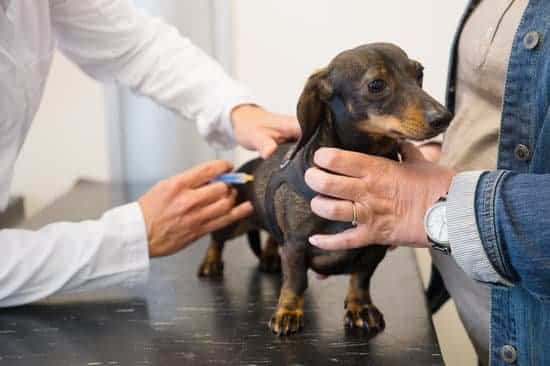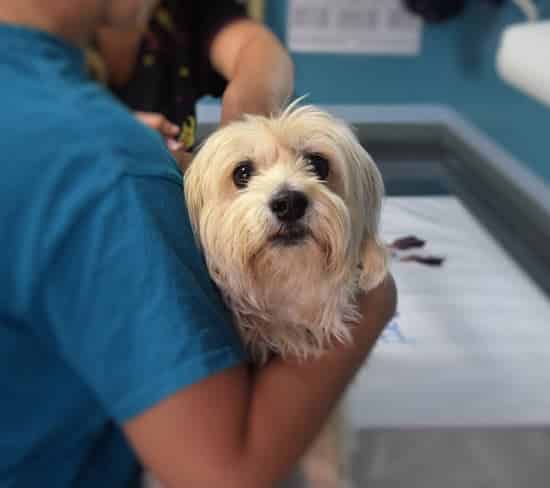Did you know cancer is a major cause of death in pets? With one in three pets being diagnosed with cancer, knowing how to spot the signs can assist you in identifying it early and giving your furry friend the best chance of recovery. We’ve put together everything you need to know about cancer in dogs and cats.
What is cancer in pets?
While cancer is a leading cause of death, it is also a complicated illness which veterinary research is continuously being conducted. There are many different types and can occur anywhere on your pet’s body. Cancer is defined as the uncontrollable division and growth of abnormal cells in the body. There are benign tumours, which do not spread but can cause secondary issues because of their size such as lipomas in older pets. There are also malignant tumours which spread to other parts of the body.
Dogs are diagnosed with cancer at the same rate as us humans.
Generally, cancer is an illness found in our senior pets, but some pets do develop it at an earlier age. Certain types of cancers are seen more often in particular breeds of cats and dogs, and environmental factors do also increase the likelihood of cancer developing. It has also been found female cats and dogs who aren’t desexed are more likely to develop mammary cancer and male dogs to develop testicular tumours.
Signs of cancer in pets
The signs and symptoms of cancer vary depending on the type of cancer and where on the body it is. While it can be difficult to detect cancer early in our pets as the symptoms can be common to a number of other illnesses, there are a number of signs to be on the lookout for. These signs include:
- Weight loss. Cancers consume energy and a normal appetite with weight loss is a significant sign something is wrong.
- Lethargy and depression. Those days when your pet just isn’t behaving like their usual self may be their way of warning you something isn’t right.
- Bleeding or discharge. This includes bleeding, vomiting and diarrhoea. Though these can be caused by a multitude of reasons, it can be a red flag, particularly in older pets. Your vet might suggest an abdominal ultrasound, which is a very useful diagnostic method.
- Appetite changes. Sometimes pets can lose their appetite or become less enthusiastic about food due to underlying signs of nausea or abdominal discomfort. Others may seem to be continually hungry due to the cancer utilising the food as fuel.
- Persistent limping. In large breed dogs, continual limping and pain could be a sign of aggressive bone cancer. It is important to investigate as soon as it occurs.
- Lumps, bumps or swellings. It’s important to examine your pet regularly. Take note of new growths on your pet including the size, appearance, if there is any discharge from it, and any other changes. Often malignant cancers grow faster than benign ones. We recommend getting any new lumps checked with your vet as soon as possible.
- Distended abdomen. An enlarged abdomen can be an emergency situation. It could mean there is an issue with an organ, or blood or dangerous fluid in the abdomen. This is something to be acted on quickly.
- Wounds not healing. Sores that don’t seem to be healing could be a sign of infection or cancer. It is best to see your vet in order to determine what the cause is.
- Bad odour. This is a common sign of tumours in the mouth, nose or anus.
- Difficulty eating or swallowing. This is a common sign of cancer in the mouth and neck.
- Hesitation to exercise or play, or a decrease in stamina. There are a number of reasons why your pet isn’t as active as usual. But it is also one of the first signs your pet isn’t feeling well.
- Difficulty breathing or going to the bathroom. These problems often indicate an underlying health issue and require a trip to the vet.
These signs don’t necessarily mean your pet has cancer, but if your pet is exhibiting any of the signs a visit to your vet is strongly recommended to determine what is wrong.
Treatment options

Should your pet be diagnosed with cancer, your vet may prescribe a couple of treatments. The reason for this is many treatments build on each other, working better together rather than by themselves. A treatment plan can include:
- Surgery to remove the cancerous cells
- Radiation to kill any of the remaining cancerous cells
- Chemotherapy to slow the cancer and reduce symptoms. Dogs tolerate chemotherapy well, are less likely to become sick and they don’t lose their fur as the dose is much lower than what is used for us humans.
- Immunotherapy – a vaccination to increase the immune system against cancerous cells
- Photodynamic therapy – is a new procedure used to treat certain types of cancer. It involves injecting a drug directly into the tumour. A particular wavelength of laser light is directed at the tumour which interacts with the drug causing its cells to be killed.
- Stem cell transplants for pets with blood cancers
- Cryosurgery – when extreme cold is used to destroy the cancerous tissue
- Palliative and other inexpensive medications (steroids) can be an option for some types of cancers
A concern some have is that treatment may cause their pet pain, discomfort and distress, and may opt to not seek treatment. However, our pets tolerate treatment for cancer much better than us humans. Pets don’t experience the same side effects to treatment as we do, such as nausea. And as they don’t understand what is happening, they likely see it as a normal trip to the vet which may allow them to cope better.
Preventing cancer in your pet

It is important your pet has their yearly health checks with their vet. During your pet’s physical exam, your vet pays close attention to lymph node size, heart/lung sounds, abdomen size and other vitals which can indicate concerns for underlying illnesses including cancer.
Pay close attention to what your furry friend is trying to tell you. If you notice any of these signs in your pet, seek advice from your vet.
If your pet is ill or injured, visit your closest Animal Emergency Service hospital or your local vet immediately.
